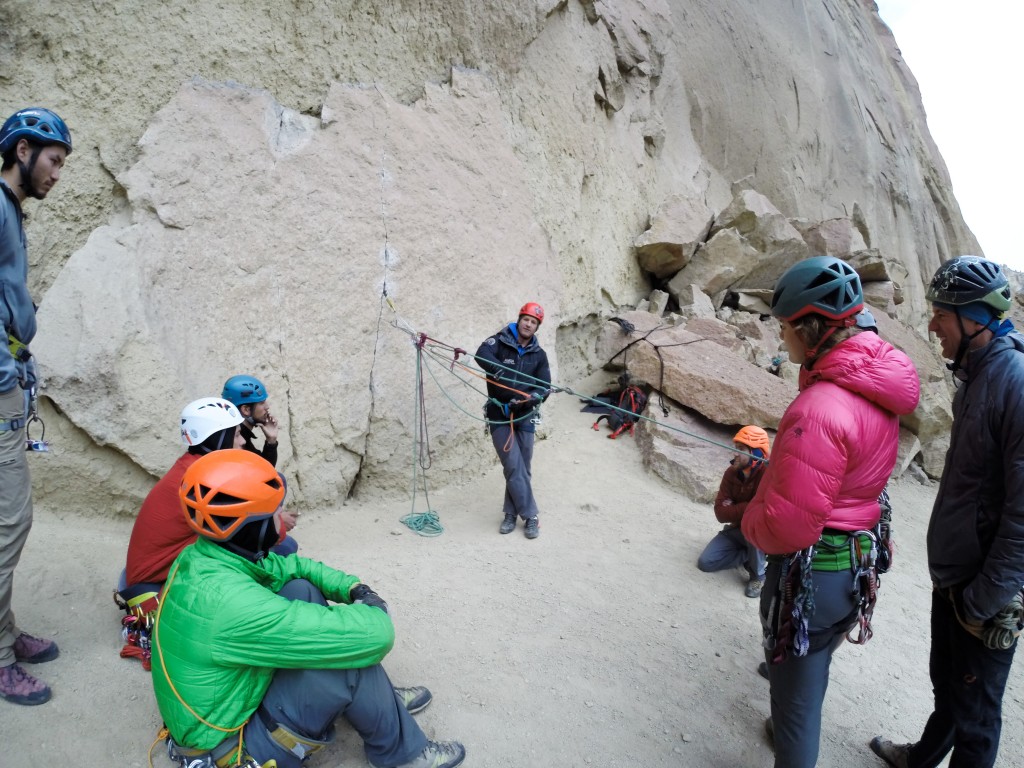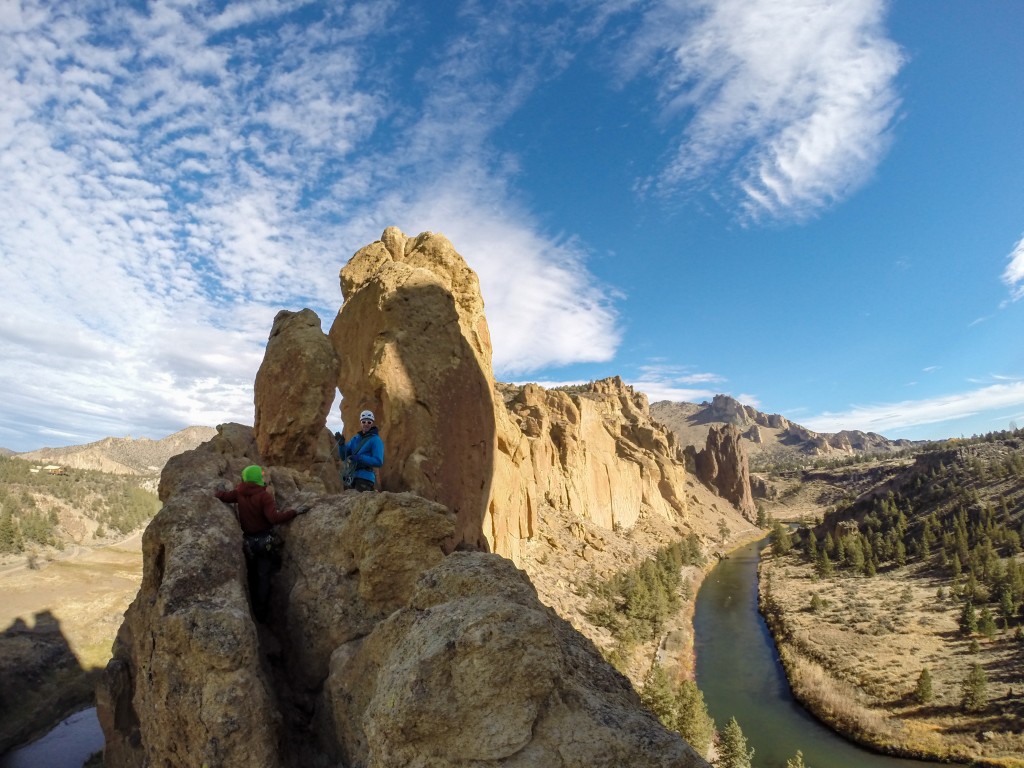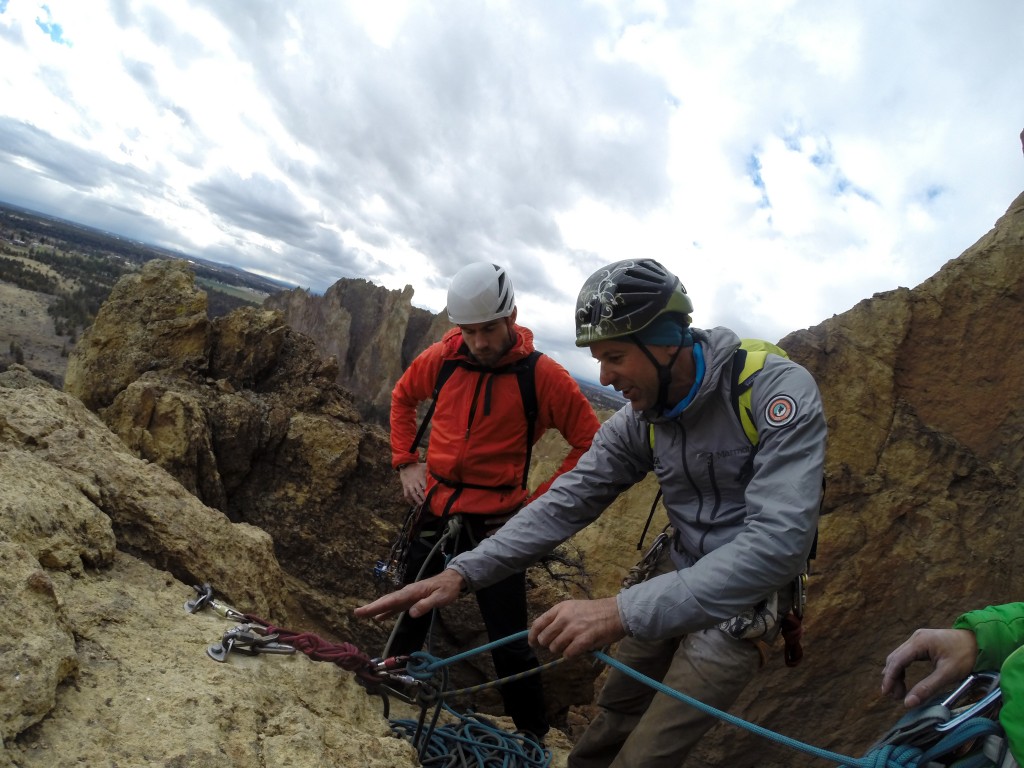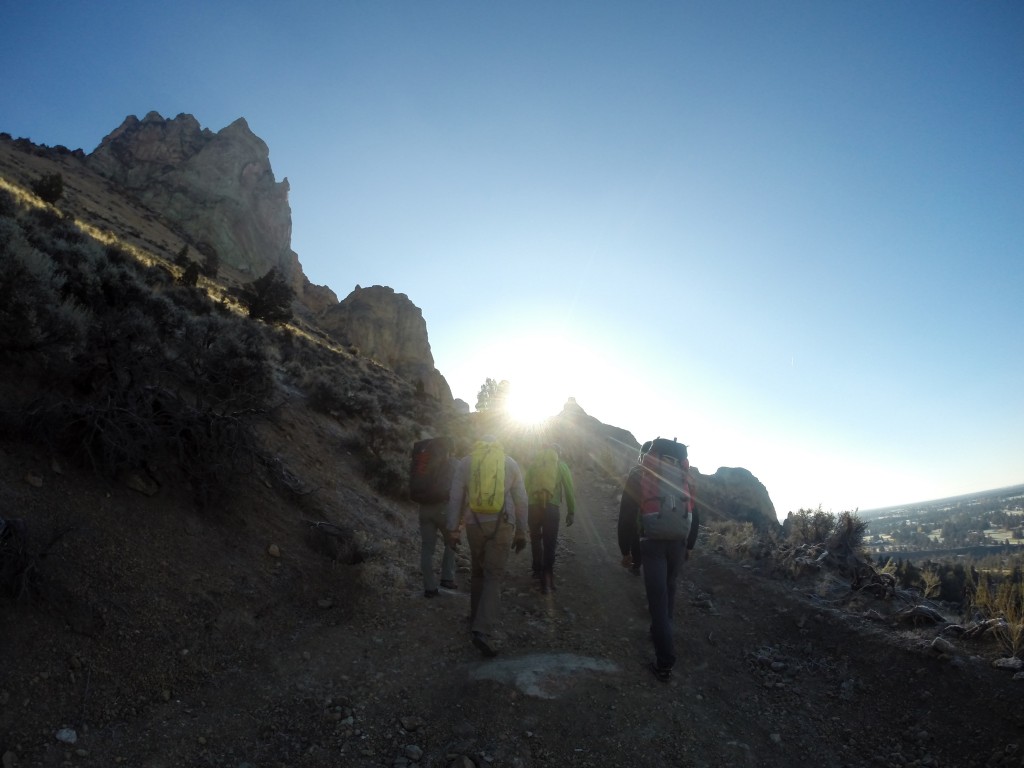Chris Sinatra, 2015 Young Aspiring Guides Scholarship Award Recipient

Learning belay escape and self rescue at Smith Rock. Photo: Chris Sinatra
Smith Rock is where I learned to climb, so many years ago. Standing on this rim when I was 9 filled me with a sense of adventure and a yearning for the unknown that would change the course of my life. Taking the AMGA Rock Guide Course here seemed like a perfect way to bring everything full circle. With the help of the AMGA Young Aspiring Guide scholarship, I’m able to open yet another chapter, beginning down the long road to becoming a Mountain Guide and learning the skills that have become Best Practice for Guides the world over.

Instructor Matt Farmer and Calvin Harris work on short roping. Photo: Chris Sinatra
Before this course, I’d never been guided, let alone guided anyone in a professional capacity. The picture in my head of Sherpa’s tying clients to their back intermingled with cliffhanger-esque visions of Tyrolean traverses. I couldn’t have been further from the truth. The level of professionalism and respect for the client demonstrated by the Instructors cleared away all those celluloid-hewn notions and replaced them with an atmosphere of heritage, self-reflection, and the utmost concern for client care and safety.
The course began with the Instructor Team demonstrating proper guiding technique, involving a level of care and forethought far exceeding the casual climbing of a day out with friends. Short roping, coaching, managing transitions between 4th and 5th class terrain, and planning appropriate descents were some of the standout techniques that the Guides utilized to manage risk while providing a positive and inclusive experience for the client.

Instructor Pete Keane discussing anchor placement with student Adam Snyder. Photo: Chris Sinatra
The early days of the course would start with a Guide’s Meeting, covering all aspects of the day, from an overview of the weather, a rundown of the clients and available guides, the days plan and equipment, and potential hazards to be on the lookout for. Afterward, we’d begin learning new skills with an instructor demonstration followed by a guided practice session on the ground. Once skills were dialed, we’d then spend the afternoon putting that knowledge into practice by mock-guiding a route.
Drawing from a deep wealth of knowledge and experience, the Instructors fostered a collaborative learning environment where mistakes could be made and corrected without any judgment. Questions could be asked and students could learn from one another under the watchful eye of an Instructor. Rather than performing a rote series of steps for each belay or transition, as students we were encouraged to consider why we use particular techniques and find ways to streamline our systems by adapting skills for a specific situation.

Walking off in to the sunset after a solid day of climbing. Photo: Chris Sinatra
Far from learning skills bound to the world of guiding, many of the techniques and approaches to transitions will become immensely valuable in my personal climbing and beyond. That is, perhaps, one of the greatest strengths of the AMGA; whether or not one becomes a professional guide, by working through a course they’re able to tap into a knowledge base that is constantly being refined and reexamined by professionals utilizing those skills on a daily basis. To join that community has been a privilege, and I’m eager to continue my education as a Rock, Ski, and Alpine Guide.












